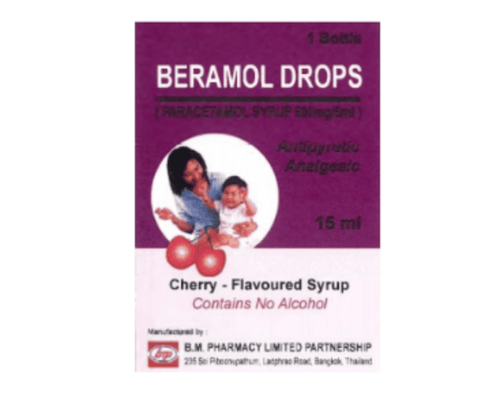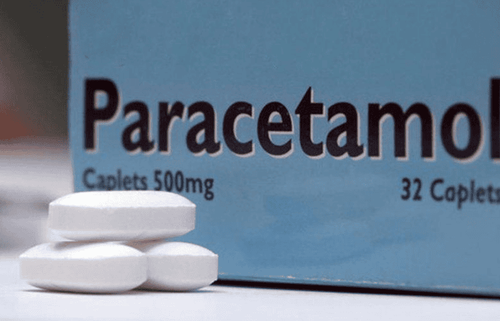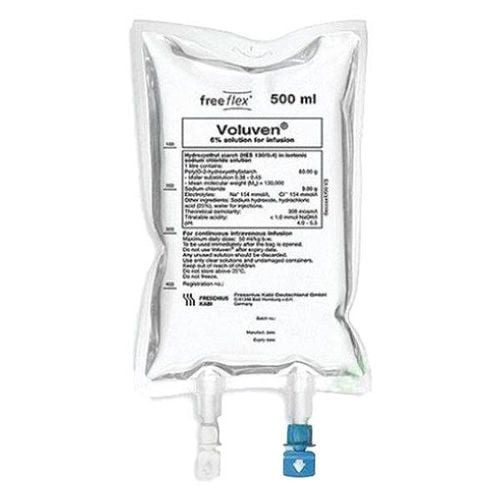This is an automatically translated article.
Dengue hemorrhagic fever is an acute infectious disease caused by the dengue virus. The disease is transmitted by blood-borne pathogens, transmitted by the mosquito Aedes aegypti. The main manifestation of the disease is fever with bleeding in the skin or mucous membranes, the most severe manifestation of this disease is dengue shock syndrome.1. What is Dengue Hemorrhagic Fever? Dengue hemorrhagic fever, commonly known as dengue fever, is an acute infectious disease caused by the dengue virus. The disease is transmitted by blood, which is transmitted by the mosquito Aedes aegypti.
Dengue fever is characterized by fever accompanied by bleeding in the skin or mucous membranes causing thrombocytopenia. The most severe manifestation of this disease is dengue shock syndrome.
2. Signs to recognize Dengue hemorrhagic fever In the early stages of the disease, patients will have common symptoms such as:
Continuous high fever Headache, loss of appetite, nausea Muscle pain, joint pain Pain two fovea Subcutaneous hemorrhage, nosebleed or bleeding gums If the patient is not diagnosed and treated promptly, it can lead to severe plasma leakage leading to hypovolemic shock causing dengue shock Dengue blood. At this time, the patient will have the following manifestations:
Acute circulatory failure: the patient has signs of fatigue, lethargy or restlessness, cold feet and hands, cold and moist skin, small rapid pulse, blood pressure stuck (maximum blood pressure minus diastolic blood pressure ≤ 20 mmHg) even the patient may have a drop in blood pressure or blood pressure may not be measured; urinating less. This condition usually occurs on the 3rd - 7th day of illness. Dengue hemorrhagic fever is divided into two levels as follows: Dengue hemorrhagic fever with circulatory failure, small rapid pulse, low or stuck blood pressure, accompanied by other symptoms such as cold, moist skin, restlessness, and fatigue. restless or lethargic. Severe dengue hemorrhagic fever: the patient has severe shock, small pulse is difficult to catch, blood pressure cannot be measured.

Người bệnh sốc sốt xuất huyết Dengue có thể gặp tình trạng chảy máu cam
Note: during the course of the disease, the patient can change from mild to severe. Therefore, patients need to be monitored and graded for prognosis and timely treatment.
3. Treatment of Dengue Hemorrhagic Shock Treatment for Dengue hemorrhagic shock depends on whether the patient's shock is mild or severe.
3.1. Treatment of Dengue hemorrhagic fever Patients with Dengue hemorrhagic fever should be given appropriate fluids. The types of fluids to be prepared in this case are:
Ringer lactate NaCl 0.9% Polymer solution: Dextran 40 or 70, Hydroxyethyl starch. How to administer the infusion:
It is necessary to quickly replace the lost serum with Ringer lactate solution or 0.9% NaCl solution. Administer a rapid intravenous infusion at a rate of 15-20 ml/kg/hour. After infusion 1 hour, 2 hours need to re-evaluate the patient's condition, check the Hematocrit index. After 1 hour, if the patient is out of shock, the blood pressure is not stuck, the pulse is clear and normal, the limbs are warm, the urine is more, it is necessary to reduce the infusion rate to 10ml/kg/hour, continue infusion in 12 o'clock. Then gradually reduce the infusion rate to 7.5ml/kg/hour followed by infusion over the next 1-2 hours. Then reduce to a rate of 5ml/kg/hour infusion over 4-5 hours, to 3ml/kg/hour infusion 4-6 hours depending on the patient's condition. After 1 hour, if the patient's condition does not improve, it is necessary to replace the infusion with a macromolecular solution, infused at a rate of 15-20ml/kg/hour, infused over 1 hour. Then continue to re-evaluate the patient's condition: If the patient's condition improves, the hematocrit index decreases, then reduce the infusion rate to 10ml/kg/hour, infused over 1-2 hours. After that, the patient's condition improved, continue to reduce the infusion rate to 7.5ml/kg/hour, then 5ml/kg/hour, infusion for 2-3 hours. Closely monitor the patient's condition, if stable, it is possible to switch to infusion of electrolyte solutions. If the patient's shock has not improved, a central venous pressure (CVP) measurement should be performed to decide on management. If the patient's shock status does not improve, and the hematocrit falls rapidly, then it is necessary to check for internal bleeding and consider the indication for a blood transfusion at a rate of 10ml/kg/hour.
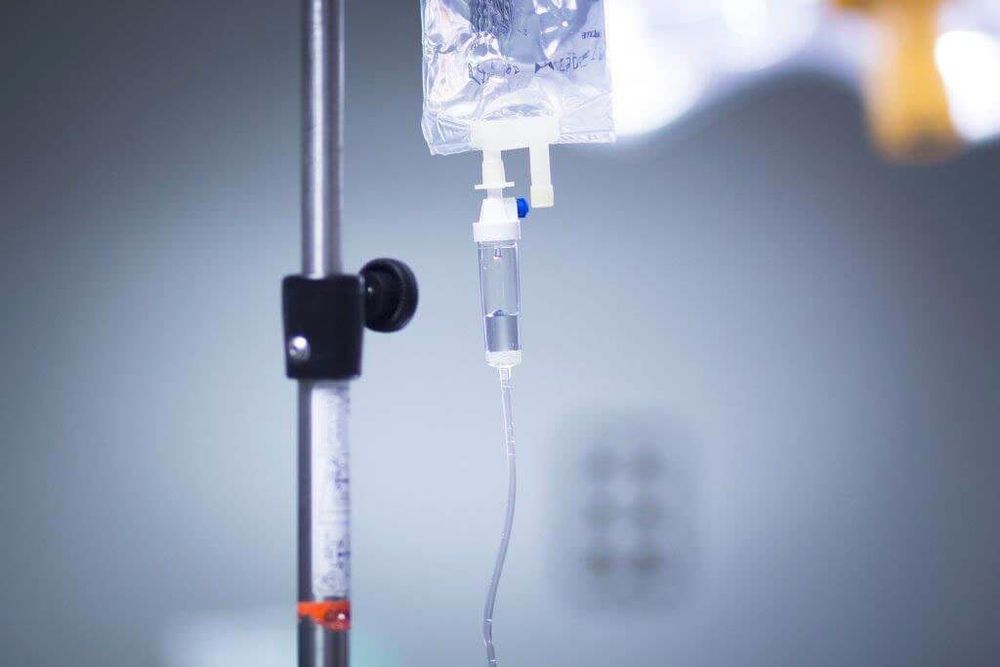
Bệnh nhân sốc sốt xuất huyết Dengue cần được truyền dịch phù hợp
Note: the change of infusion rate must be based on pulse, blood pressure, urine output, cardiopulmonary status, hematocrit index and CVP index every 1-2 hours.
3.2. Treatment of severe dengue hemorrhagic fever In case the patient is admitted to the hospital in severe shock, the blood pressure cannot be measured, the pulse in the arms cannot be caught, it needs to be treated very urgently.
Put the patient in a low position Breathing oxygen Infusion: For patients under 15 years old: use a large syringe, inject Ringer lactate solution or 0.9% NaCl solution into the vein at the rate of 20ml/kg within 15 minutes. . Then re-evaluate the patient's condition, there are 3 possibilities as follows:
+ If the pulse is clear, the blood pressure is not stuck, use the macromolecular solution at an infusion rate of 10ml/kg/hour.
+ If the pulse is fast, the blood pressure is stuck or dropped: it is necessary to infuse the macromolecule solution at the rate of 15-20ml/kg/hour and then treat it like the part of Dengue hemorrhagic shock above.
+ If pulse is absent and blood pressure is still not measured, the macromolecule solution should be injected directly into the vein at the rate of 20ml/kg for 15 minutes. Then, if blood pressure and pulse are clear, infuse the macromolecule solution at the rate of 15-20ml/kg/hour, then continue to manage according to the treatment of dengue shock above.
Notes when administering fluids to patients with dengue shock:
Stop IV fluids when the patient's blood pressure and pulse return to normal, frequent urination. In general, 24 hours after the shock is over, there is no need for rehydration. During infusion, attention should be paid to the reabsorption of plasma from the extravascular space back into the lumen as manifested by normal blood pressure, pulse, and decreased hematocrit. It is necessary to monitor for symptoms of acute pulmonary edema if the infusion is continued. When patients show signs of fluid overload causing heart failure or acute pulmonary edema, diuretics such as furosemide 0.5-1 mg/kg/1 injection/intravenous infusion are required. In the case that after recovering from shock, but the blood pressure is stuck but the patient's limbs are warm, the pulse is slow, clear, and there is a lot of urine, no fluids should be given, but intravenous needles are still saved and monitored in the emergency room. For patients arriving in shock, receiving anti-shock from the frontline, treat as if there is no improvement (re-shock). Attention should be paid to the amount of fluid that has been transferred from the frontline (check the medical record) to calculate the amount of fluid to be infused into the patient. If the patient is an adult and shows signs of re-shock, use only Dextran 40 macromolecule solution not exceeding 1,000 ml and not more than 500 ml for Dextran 70. If the patient deteriorates, proceed with: + Measure only CVP number for CVP-based fluid resuscitation or vasopressors if CVP is high.
+ Closely monitor the patient's pulse, blood pressure, breathing rate, skin, mucous membranes, look for internal bleeding to order blood transfusion in a timely manner.
+ Care should be taken when carrying out the procedure in locations where hemostasis is difficult, such as the subclavian and cervical veins.
If blood pressure is stuck, especially after a while it has returned to normal, it is necessary to distinguish the following causes: + Hypoglycaemia
+ Re-shock due to insufficient volume of fluid continues to escape from the vessel
+ Hemorrhage internal organs
+ Overload due to reabsorption or excessive perfusion
When treating shock, attention should be paid to correcting electrolyte disturbances and acid-base balance: + Hyponatremia is common in most patients cases of severe shock persist and sometimes with metabolic acidosis. Therefore, it is necessary to determine the degree of electrolyte disturbance and, if possible, measure blood gas indices in patients with severe shock and in shock patients who do not respond quickly to treatment.
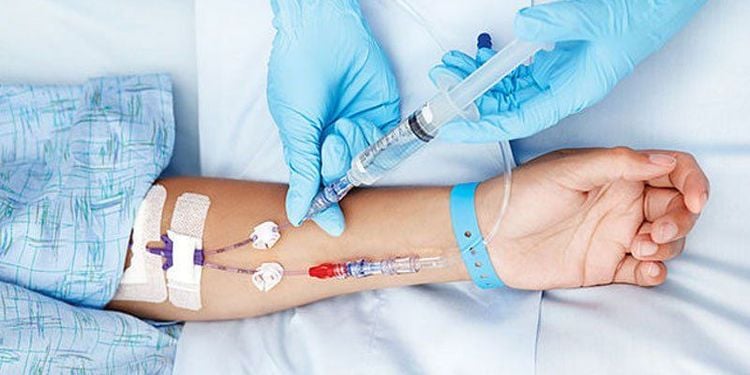
Điều trị sốc sốt xuất huyết Dengue nặng cần tuân thủ theo đúng phác đồ điều trị
3.3. Management of dengue shock associated with hemorrhage Continue to shock the patient with electrolyte solutions (while waiting for red blood cells to settle). Transfuse erythrocytes at a rate of 5-10 ml/kg. Correction of coagulopathy. Management of hemostasis: local compression bandages, anterior/posterior nasal mechees, endoscopic interventional hemostasis of the stomach and duodenum,... Consider using a proton pump inhibitor if the patient has symptoms suggestive of bleeding. upper gastrointestinal bleeding or a history of peptic ulcer disease. If the patient presents with severe liver failure consider vitamin K. Dengue fever currently has no cure, the main method of treatment is symptomatic treatment, when dengue fever in adults is mild, it can be taken care of at home, giving the patient rest and drinking a lot. water, use soft and watery dishes, easy to digest, reduce fever with Paracetamol, cool off when fever is high. Patients need to strictly follow the doctor's instructions, closely monitor themselves at home, and can go to the hospital to perform the necessary tests (if possible).
Vinmec International General Hospital is one of the hospitals that not only ensures professional quality with a team of leading medical doctors, a system of modern equipment and technology. The hospital provides comprehensive and professional medical examination, consultation and treatment services, with a civilized, polite, safe and sterile medical examination and treatment space. Customers when choosing to perform tests here can be completely assured of the accuracy of test results.
Please dial HOTLINE for more information or register for an appointment HERE. Download MyVinmec app to make appointments faster and to manage your bookings easily.




